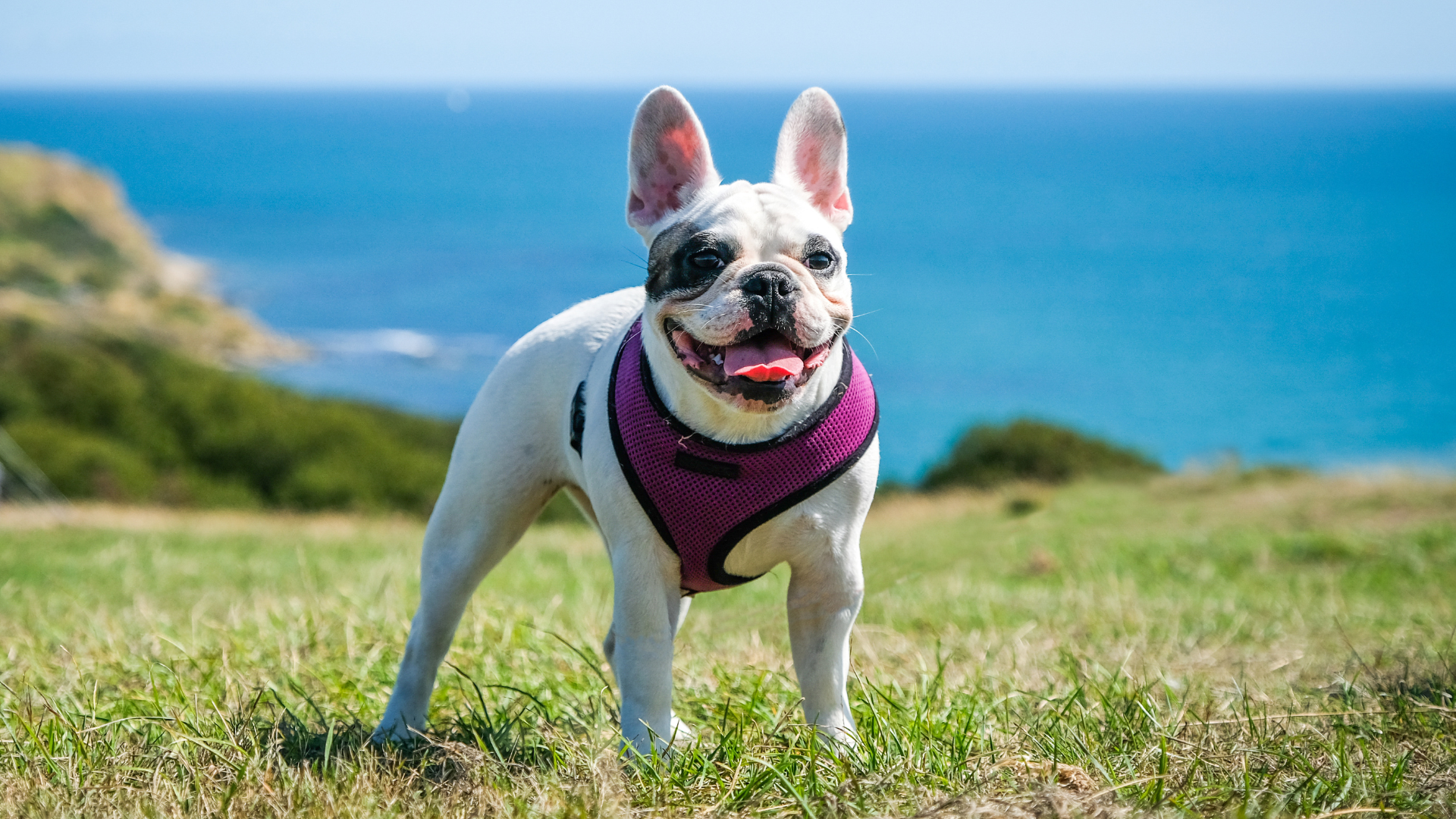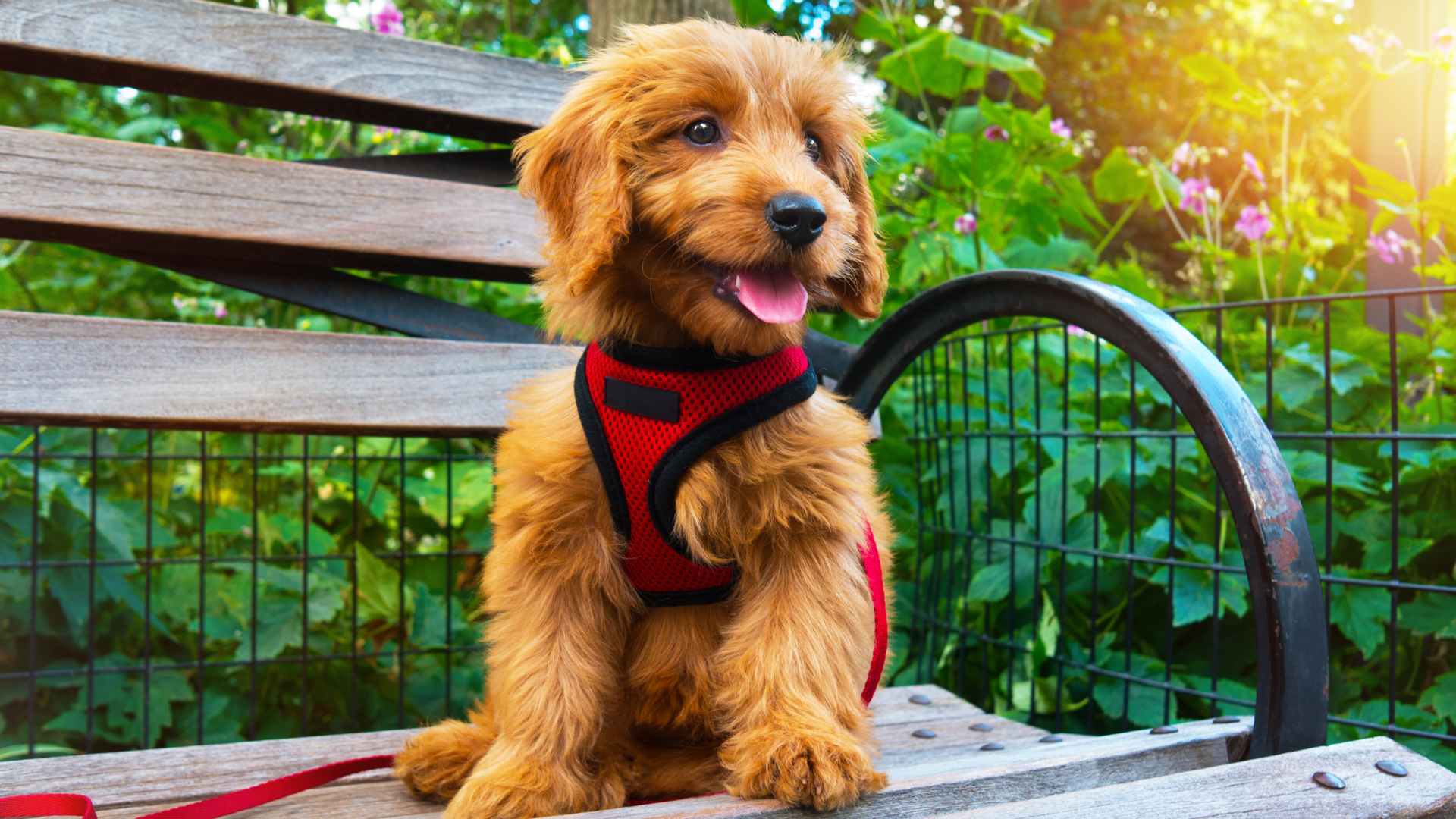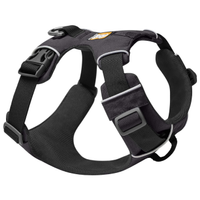Are harnesses bad for dogs? The pros and cons, according to a trainer
Are you questioning, 'Are harnesses bad for dogs’? Here are the best practices for walking your dog on a harness.

We have so many choices when it comes to our dog’s care - and one thing you might be asking yourself is, 'Are harnesses bad for dogs?' When it comes to walking your dog, choosing the right equipment is not only essential from a safety and comfort perspective, but it can even have behavioral implications.
While there are many different walking tools available, harnesses for dogs have become increasingly popular in recent years. When I began my career as a certified animal behaviorist, less than half the dogs I worked with were walking on a harness; now, I’d suggest it’s closer to 90%. There is however, an ongoing debate about whether harnesses are actually good for our dogs or if they could potentially cause harm or encourage pulling.
The arguments for using the best dog harness include having better control over pulling and reducing strain on a dog’s neck. This reduction of pressure on the delicate neck area can be especially important for breeds prone to respiratory issues such as brachycephalic dogs.
Critics of harnesses will suggest that they can encourage pulling or that dogs can pull more strongly while wearing a harness. There are also concerns that some harness designs may restrict the dog's natural movement or, if not properly fitted, could lead to discomfort, chafing, or the dog even escaping them.
Read on to explore the pros and cons of your dog wearing a harness. By understanding these perspectives, you’ll be able to decide if a harness is the right choice for your dog.
Are harnesses bad for dogs?
When you’re looking to choose between a harness vs collar for walking your dog, you might be worried that a harness would be a bad choice.
As a behaviorist working with dogs, I will almost always advocate a guardian using a harness with their dog instead of a collar. For me, the distribution of pressure across the body as opposed to the neck is the number one benefit. But there are many more - as you’ll learn below - which can impact how a dog walks or acts from a behavioral perspective.
PetsRadar Newsletter
Get the best advice, tips and top tech for your beloved Pets
That being said, a poorly fitting harness can be bad for your dog. If the front panel stretches across your dog’s shoulders it can impact their walking style, as opposed to the ‘Y’ shaped style that allows natural movement.
If the harness tightens and loosens as your dog has slack in the leash or pulls, this can cause discomfort and rubbing on the body. And many dogs find the over-head harnesses that have to push past their ears to go on really uncomfortable

What are the pros of dog harnesses?
1. Better control
Some harnesses can provide better control. If you have a well-fitted ‘Y’ shape harness, which has a double D-ring that attaches to a double-ended leash to the chest and back area of your dog, then you can feel more in control. The different attachment points for the leash allow for a choice of connection options depending on the situation.
2. Less pressure on the body
While all walking equipment puts some element of pressure on our dogs’ bodies, a harness helps to distribute that pressure evenly across the dog's body rather than concentrating it on the neck. This can mean a reduction in the risk of injury to the throat and spine.
3. Much better for some breeds of dogs
For dogs prone to respiratory issues - or those who’ve suffered a neck injury or tracheal collapse - a harness is much safer as it avoids putting pressure on the neck. Brachycephalic dogs in particular or dogs with long necks can benefit from a harness over a collar.

4. Increased comfort
Harnesses can be more comfortable for dogs, particularly smaller breeds that might find a leash attached to their thin neck tricky. You can choose a harness that is well padded or made with fleecy material if your dog has delicate skin.
5. Escape prevention
Some dogs can slip out of collars by backing up, especially if they are too loose on the neck. A well-fitted harness may reduce the chance of your dog escaping, which can provide an added sense of security.
6. Reduced choking hazard
Unlike collars, harnesses minimize the risk of choking or throat injuries from sudden pulls or tugs. They also protect the delicate thyroid area of the neck.
7. Natural body language
Pulling on a collar can make your dog’s face appear tense. It may also encourage them to raise their chest, which can be a sign of a threat to an approaching dog. A harness allows your dog to display natural body language more easily. We've written a full guide on dog body language.
Ruffwear Front Range Dog Harness
This harness offers two connection points to allow for walking or training your dog with a double-ended lead. Its Y-shaped style won't limit your dog’s movement and the thick padding ensures comfort on walks.
What are the cons of dog harnesses?
If your dog hates their harness you might already be aware of some of the cons. Just like with a collar, it’s also important to know how tight a dog harness should be to ensure your dog isn’t uncomfortable and to avoid chaffing.
Many of the points in the list below can be easily resolved by visiting an educated pet store for help with choosing and getting it fitted properly.
1. Reduced range of motion
Some harnesses, especially those with a front strap that sits across the chest and shoulders, can restrict a dog’s range of motion and might cause discomfort or alter their gait if not fitted correctly. This is especially important to be aware of for young puppies who are developing or older dogs who might be feeling less comfortable.
2. Difficult to put on
Harnesses can be more complicated to put on and take off, especially for dogs that find them uncomfortable. This often happens with over-the-head harnesses that don’t have extra clips at the neck area so have to slide over the head and ears.

3. Can cause chafing
If they're not fitted properly or if the dog has sensitive skin, a harness can cause chafing or irritation, particularly in areas where the straps rub against the skin, such as under their armpits. This can also be challenging for dogs who attend dog shows - as it may impact their appearance when judged.
4. Encourages pulling
No ethical piece of walking equipment is going to stop your dog from pulling. However, a harness can increase the power of your dog's pulling. Training is always required to help create a bond and connection between you and your dog on walks, where you are equally responsible for not putting pressure on the lead. Here are some of the best dog harnesses for pulling.
5. Not suitable for all activities
While harnesses can be great for walking, I always recommend they’re removed for activities like off-leash play - especially if you have an excitable puppy or adolescent dog. When dogs are playing together, the harness could get caught around one of their legs and end with them trapped together ending in conflict.
Tips for using a dog harness correctly
It’s important to understand how to measure a dog for a harness to ensure that it has the best fit possible. If you’re struggling with this part, find a local pet store that stocks a range of good quality harnesses and has experience fitting them to different breeds.
Before putting the harness on your dog for the first time, make sure that you know which way the harness should be sitting on your dog’s body and how tightly it should be adjusted.
Then take some time to learn the positive ways of how to put a dog harness on. Help your dog to desensitize to wearing the harness by firstly creating a positive response to simply seeing the harness - by holding up the harness and throwing them one of the best dog treats.
You can then build up to placing a piece of the harness on your dog’s body and feeding them again while it’s in contact with them. Then, try opening and closing the harness clips so your dog gets used to the sound. For every ‘click’ of the clip, give your dog a treat.
When you’re ready to put the whole harness onto your dog, ask them to hop onto a raised space, such as a sofa, stool, or step. Then kneel down so you’re not looming over your dog while putting the harness on. Take your time and breathe slowly so your dog can feel you’re calm. Sprinkle some treats in front of your dog or have a family member/friend feed them while you’re doing the harness up.
You might be wondering, 'Should I use head halters for dogs?' We also have a step-by-step guide on how to use a harness on a dog.

Caroline Wilkinson is a Certified Animal Behaviorist. She is a Full (assessed) Member of the APDT and INTODogs – as well as a Registered Training Instructor (ABTC). Caroline is also a Certified Real Dog Yoga Practitioner and an Applied Canine Zoopharmacognosist.

